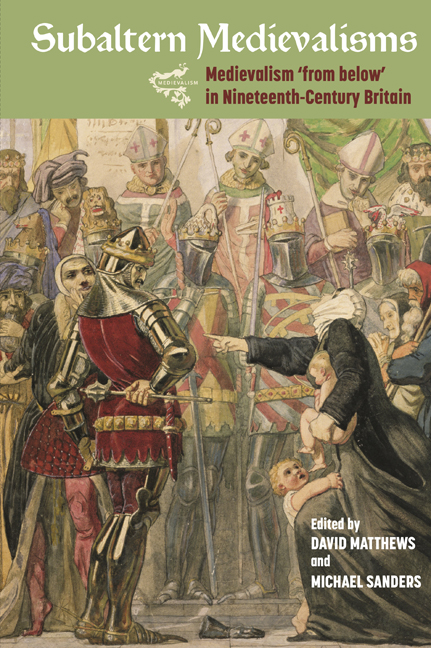Book contents
3 - How Radical was Rienzi? The Nineteenth-Century Representation of the Roman Revolutionary Republican in the British Cultural Imagination
Published online by Cambridge University Press: 09 February 2021
Summary
THIS CHAPTER WILL explore a range of British representations of Cola di Rienzi (or, more accurately, Rienzo), the fourteenth-century Roman revolutionary leader whose attempt to restore Rome to its ancient republican glory and to curb aristocratic power ended in his own violent death. The reputation of Rienzi, considered for some three hundred years to be nothing more than a demagogic tyrant, began to rise in the late eighteenth century, influenced by both the Neo-Classical Revival and Romanticism, and events such as the American and French Revolutions. While scholars have already begun to explore Rienzi's popularity in nineteenth-century historical and heritage cultures, I will focus, firstly, on how and why his reputation both grew and improved in the British cultural imagination. Secondly, I will compare these well-known representations with more radical ones – notably, the dramatic fragment by Friedrich Engels (1840/41), and Rienzi's appearances in The Northern Star and other Chartist publications. I will explore how working-class Chartists, socialists and radicals reworked him to their purposes, and how their versions differed from those of their less radical and/or more middle-class contemporaries, demonstrating that a distinctively radical Rienzi existed in mid-nineteenth-century Britain, a key element in what we might call the subaltern medievalisms of the nineteenth century explored in this volume.
Born about 1313, Rienzi was the son of a tavern-keeper, but he received a classical education and become a city notary in Rome. In 1343, he was sent on a mission to Pope Clement VI, at Avignon (where the papacy was then established, to escape the internecine warfare of the Roman aristocracy). It was this state of lawlessness which Rienzi was anxious to end: with the initial support of the pope and many of the people, he staged a coup d’état in May 1347, was appointed tribune, and introduced stern measures against the aristocratic factions led by the Colonna and Orsini families. Additionally, he aimed to create an Italian federation of states, under the leadership of Rome, and disputed the authority of the Holy Roman Emperor. His increasingly extravagant and authoritarian leadership undermined his regime, as too his introduction of new taxes and his excommunication by the now uneasy pope.
- Type
- Chapter
- Information
- Subaltern MedievalismsMedievalism 'from below' in Nineteenth-Century Britain, pp. 55 - 74Publisher: Boydell & BrewerPrint publication year: 2021



